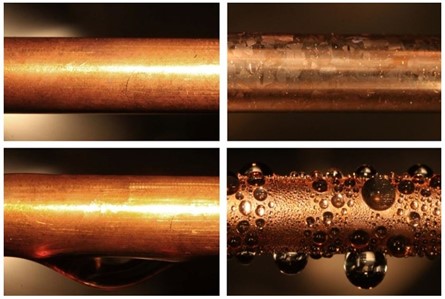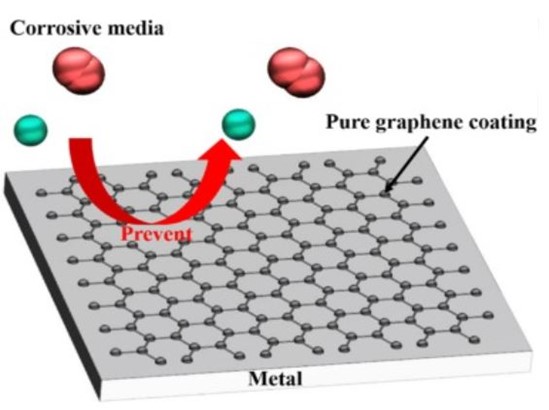Cooling is the largest energy consumption in buildings (up to 60% International Energy Agency) and its energy demand has more than tripled in the last thirty years and will experience exponential growth into the future. Heating Ventilation Air Conditioning Refrigeration (HVAC-R) technology is racing to find solutions for efficiency and emissions in parallel with governments push to implement more stringent standards to reduce CO2 emissions and sustainability.
GRAPH-X Coating System is a unique method of improving the conductivity of corroded heat exchange surfaces. The process coats and protects damaged heat exchange surfaces while rebuilding the lost corroded thermal conductivity and increasing the heat transfer rate by leveraging the physics of Graphene resulting in an efficiency improvement and a power reduction. GRAPH-X can also protect both RTPF coils (round tube plate fin) and MCHC coils (micro channel) from accelerated corrosion damage, thereby extending the life of the coil and reducing energy consumption.
GRAPH-X is powered by Graphene. Due to graphene’s molecular structure and one layer only being an atom thick, the number of graphene particles in the coating is exponentially higher than that of other barrier coatings. This means that in a process where water particles have to navigate through the coating to come into contact with the metal, graphene provides a superior protective barrier.
HOW DOES IT WORK?
- THERMAL CONDUCTIVITY : Graphene is reported to have a thermal conductivity 10-15 times greater than aluminum and copper, increasing heat dissipation across a system’s condenser coil.
- CORROSION RESISTANT : Graphene creates an impervious layer that prevents oxygen from reaching metal surfaces, eliminating metal corrosion and leveraging Graphene’s hydrophobic (water repellence) properties.
- HIGHER SURFACE AREA : Up to 300m2 of micro surface area per gram of Graphene enables increased heat dissipation within the thin coating layer of GRAPH-X.
An uncoated copper condenser tube (top left) is shown next to a similar tube coated with graphene (top right). When exposed to water vapor at 100 degrees Celsius, the uncoated tube produces an inefficient water film (bottom left), while the coated shows the more desirable drop wise condensation (bottom right).

Graphene coating has excellent shielding performance, which can prevent corrosion factors such as oxygen and water molecules from reaching the surface of the metal matrix, and is considered to be the thinnest corrosion protection coating known. In addition, graphene has unique and excellent thermal, electrical and mechanical properties (such as high strength, good tribology properties, etc. and will become the most ideal anti-corrosion coating. The composite application of graphene and polymer resin can not only retain the excellent thermal, electrical and shielding properties of graphene, but also have the characteristics of strong adhesion and high mechanical properties. Therefore, the functional anticorrosive coating can be obtained after the two are used together. However, due to graphene's high surface area, strong Van der Waals force and π-π effect, it is easy to agglomerate, so the preparation of high-performance graphene/organic composite coating must first overcome the agglomeration of graphene and improve its dispersion.
After more than ten years of development, graphene has gradually become the "star material" widely concerned by the whole society, and its huge industrial development prospects have attracted worldwide attention. Graphene has excellent shielding properties and high length-diameter ratio and can be used in various forms in the field of metal protection. The application of graphene films, graphene/organic protective coatings and graphene-conductive polymer/organic protective coatings in the field of metal corrosion protection are reviewed.
Graphene can act as an isolation layer between the medium and the base through the "maze" physical barrier to delay the corrosion rate of metal, greatly improving the corrosion resistance of metal. In addition, the conductive polymer modified graphene can effectively avoid the phenomenon of accelerated metal corrosion caused by electrochemical reaction in long-term immersion.

